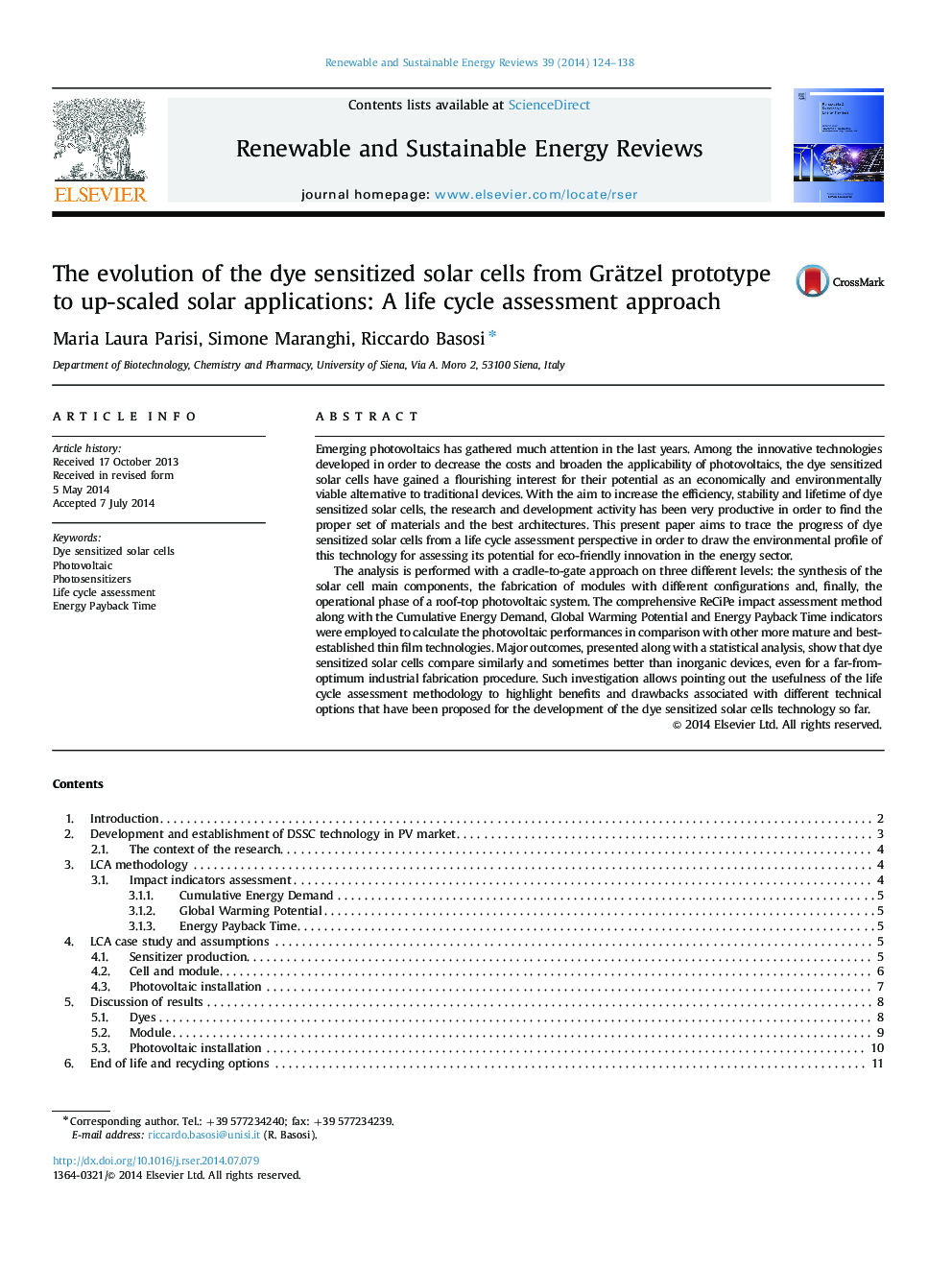| Article ID | Journal | Published Year | Pages | File Type |
|---|---|---|---|---|
| 8118896 | Renewable and Sustainable Energy Reviews | 2014 | 15 Pages |
Abstract
The analysis is performed with a cradle-to-gate approach on three different levels: the synthesis of the solar cell main components, the fabrication of modules with different configurations and, finally, the operational phase of a roof-top photovoltaic system. The comprehensive ReCiPe impact assessment method along with the Cumulative Energy Demand, Global Warming Potential and Energy Payback Time indicators were employed to calculate the photovoltaic performances in comparison with other more mature and best-established thin film technologies. Major outcomes, presented along with a statistical analysis, show that dye sensitized solar cells compare similarly and sometimes better than inorganic devices, even for a far-from-optimum industrial fabrication procedure. Such investigation allows pointing out the usefulness of the life cycle assessment methodology to highlight benefits and drawbacks associated with different technical options that have been proposed for the development of the dye sensitized solar cells technology so far.
Keywords
Related Topics
Physical Sciences and Engineering
Energy
Renewable Energy, Sustainability and the Environment
Authors
Maria Laura Parisi, Simone Maranghi, Riccardo Basosi,
